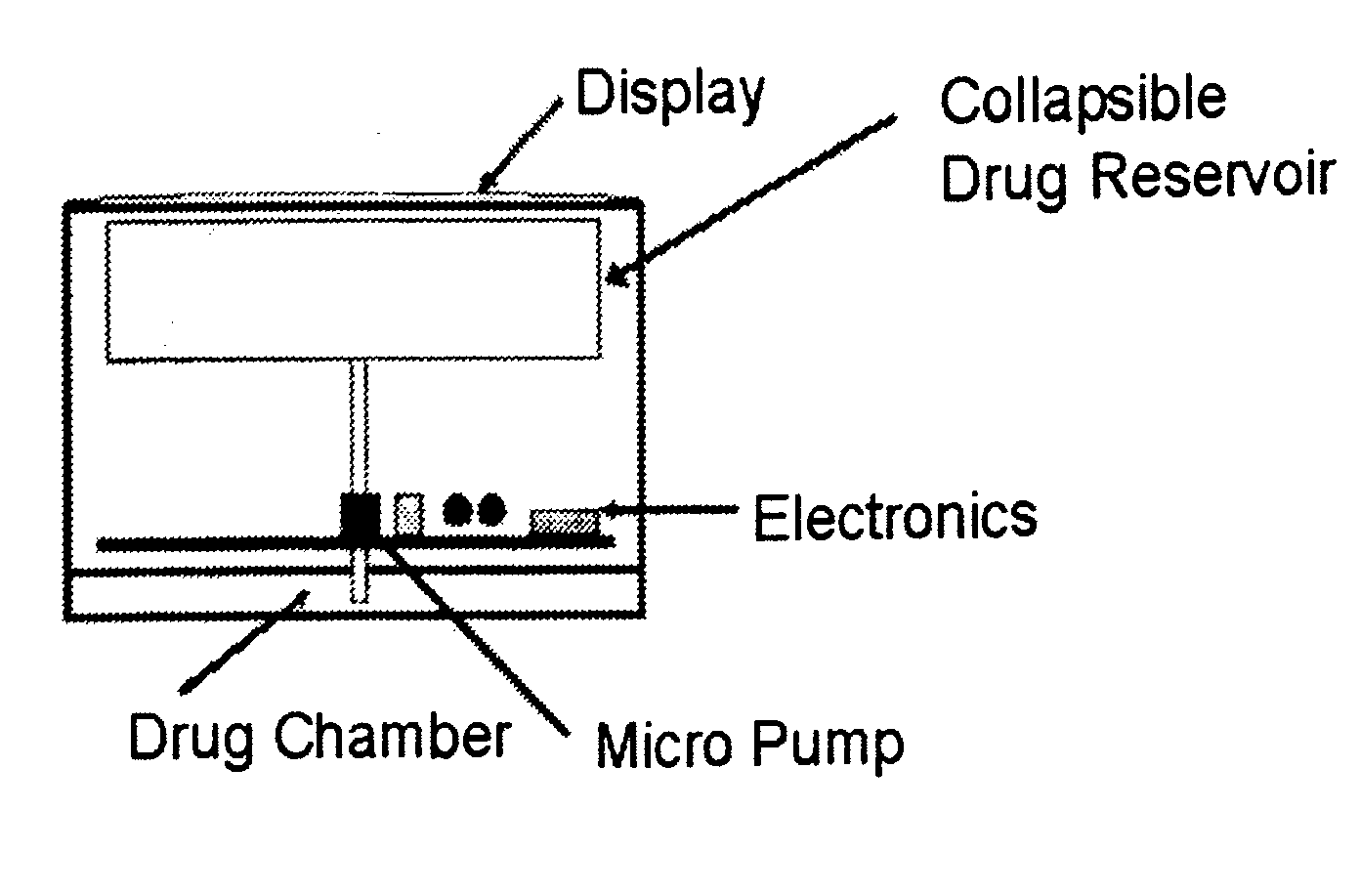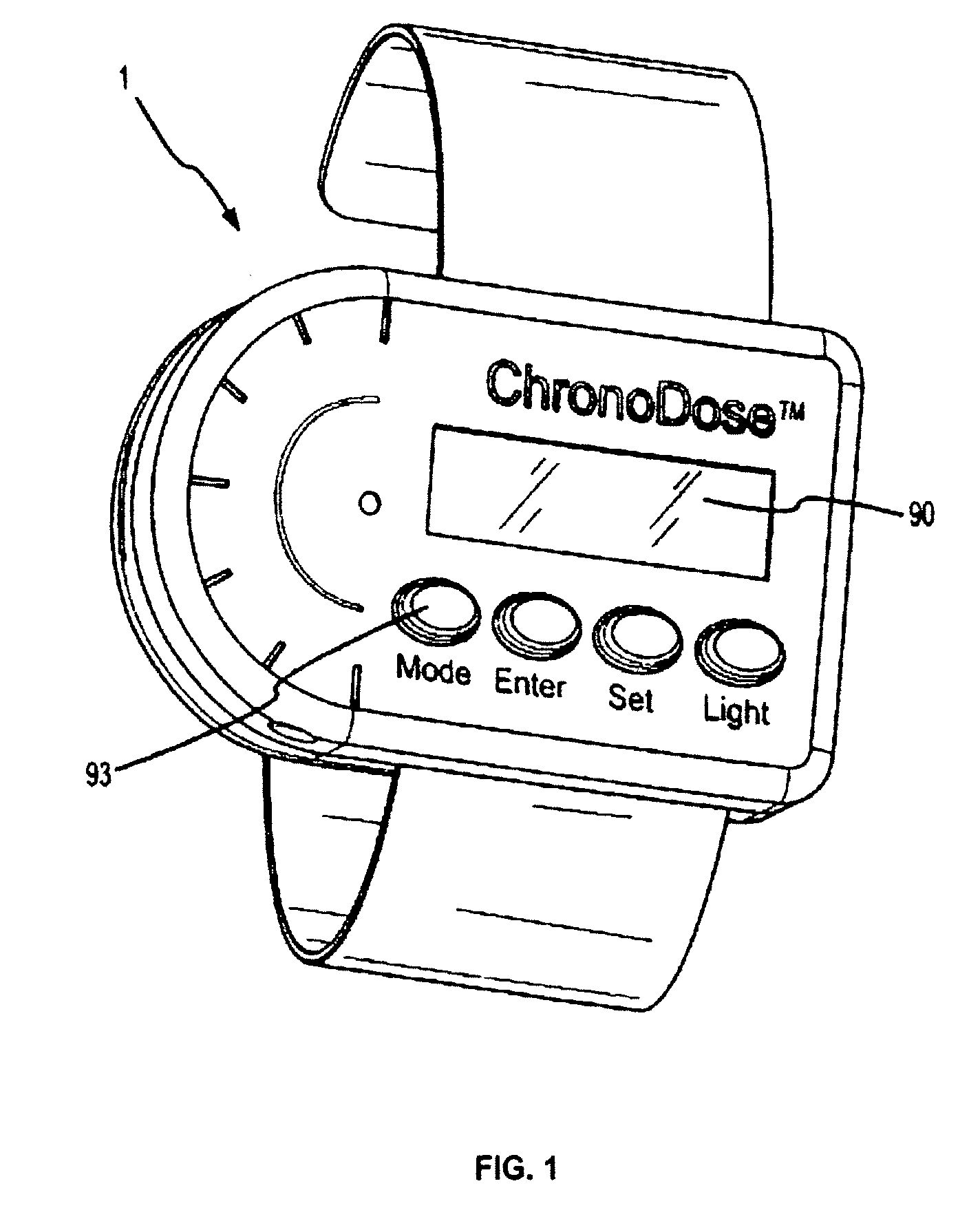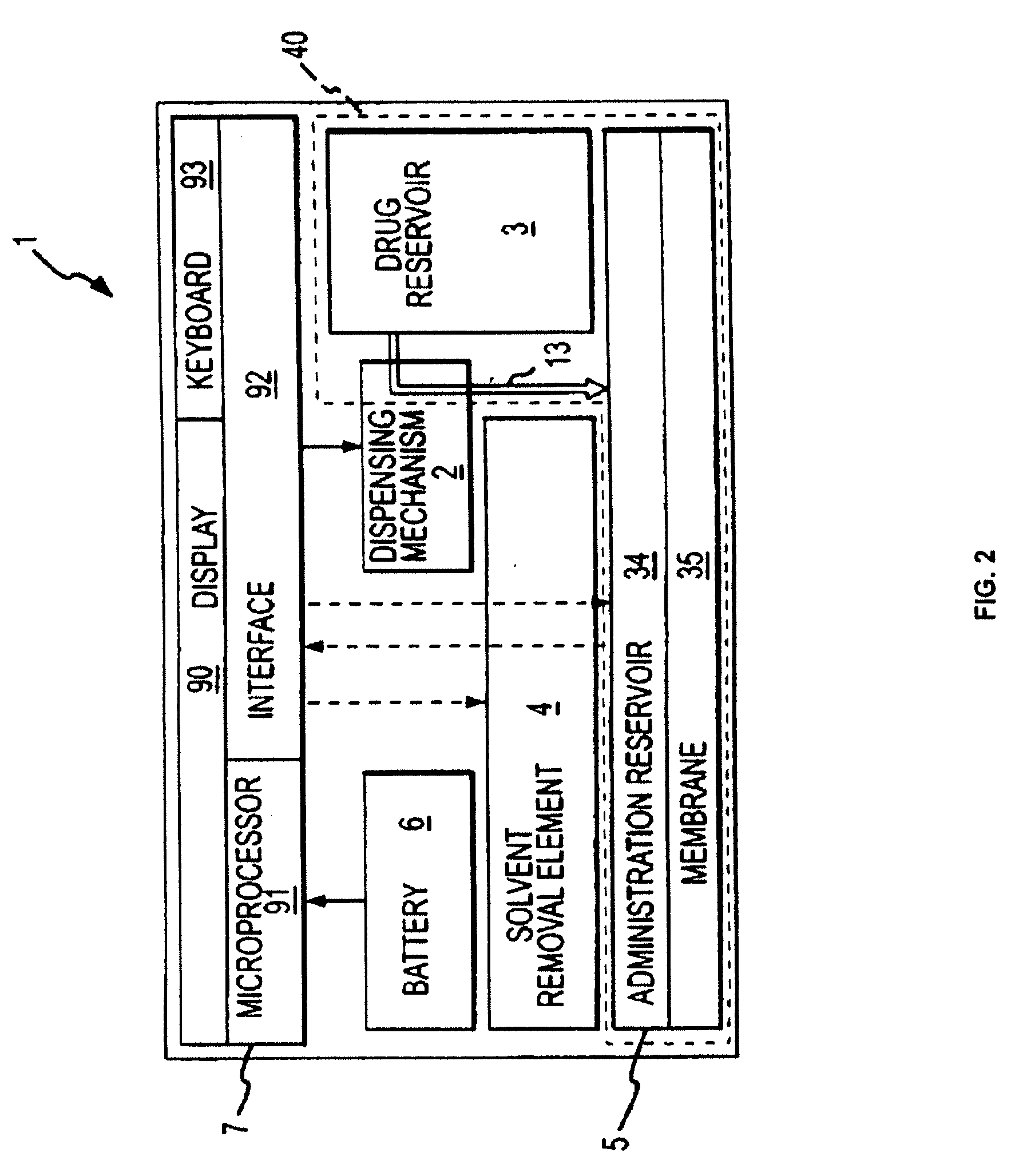Biosynchronous transdermal drug delivery for longevity, anti-aging, fatigue management, obesity, weight loss, weight management, delivery of nutraceuticals, and the treatment of hyperglycemia, alzheimer's disease, sleep disorders, parkinson's disease, aids, epilepsy, attention deficit disorder, nicotine addiction, cancer, headache and pain control, asthma, angina, hypertension, depression, cold, flu and the like
a biosynchronous transdermal drug and longevity technology, applied in the direction of nitro compound active ingredients, drug compositions, epilepsy, etc., can solve the problems of difficult to provide an inexpensive portable device, difficult to effectively control the concentration of substances on the patch, and uncomfortable parenteral methods for patients, so as to improve patient compliance, reduce the amount of drug needed, and improve the performance of the substance in the body
- Summary
- Abstract
- Description
- Claims
- Application Information
AI Technical Summary
Benefits of technology
Problems solved by technology
Method used
Image
Examples
example 1
In Vitro Evaluation of Skin Permeability
[0154]FIG. 6 shows in vitro flux results of a model compound (nicotine) delivery through human cadaver skin (dermatomed to 0.5 mm) by the ChronoDose™ prototype programmed and automatically operated via software and laptop computer. The area of skin permeation was 10 cm2. A 100 mg / ml nicotine formulation in ethanol / water 1 / 1 was dispensed at 0, 1, 8, 9, 16 and 17 hours into the experiment. Each time, 200 μl of formulation was dispensed on a 10 cm2 surface area of interface of diffusion, separated from the skin by the EVA membrane. Using proprietary software, the prototype was triggered by a laptop computer. Additionally, the dose quantity was strictly controlled and monitored. Drug flux samples were obtained using a flow-through Franz cell permeation system with samples collected every 15 minutes. Hourly time point samples were analyzed and recorded. Samples were analyzed by UV / Vis spectrophotometry.
[0155]The results demonstrate that three cycl...
example 2
[0156]The device, described herein, was tested on 12 healthy male volunteers for an open, three-periods, single center, dose-escalation study using nicotine as the model compound. FIG. 7 shows test result on 12 human subjects. The dose escalation trial showed statistically significant modulation and control of the dosing profiles. Using low, medium and high concentrations, for 16 hours, the model drug permeated each subject's skin on multiple occasions, resulting in clear and distinct peaks and troughs of therapeutically effective and well-targeted blood plasma concentration levels.
[0157]Although the invention has been described and illustrated with a certain degree of particularity, it is understood that the present disclosure has been made only by way of example, and that numerous changes in the combination and arrangement of parts can be resorted to by those skilled in the art without departing from the spirit and scope of the invention, as hereinafter claimed. For ...
examples
Zidovudine, Didanosine
[0770]Currently available antiretroviral drug regimens are able to suppress HIV replication and allow CD4 recovery in the vast majority of patients with HIV infection. The challenge is to match each patient to the regimen that is most likely to durably suppress HIV replication enough to prevent resistance selection without causing treatment-limiting toxicities. It is also critical, but difficult, to know when to begin treatment relative to CD4 cell count and plasma viral load.
[0771]Adherence to antiretroviral therapy for the treatment of HIV infection and AIDS has become one of the most important clinical challenges among HIV health care providers and patients. Adherence to the prescribed regimen may predict which patients achieve undetectable viral loads. Unfortunately, non-adherence is common in antiretroviral therapy and has been associated with increases in viral load and the development of drug resistance. Efforts to maximize patient adherence are critical...
PUM
| Property | Measurement | Unit |
|---|---|---|
| temperature | aaaaa | aaaaa |
| area | aaaaa | aaaaa |
| surface area | aaaaa | aaaaa |
Abstract
Description
Claims
Application Information
 Login to View More
Login to View More - R&D
- Intellectual Property
- Life Sciences
- Materials
- Tech Scout
- Unparalleled Data Quality
- Higher Quality Content
- 60% Fewer Hallucinations
Browse by: Latest US Patents, China's latest patents, Technical Efficacy Thesaurus, Application Domain, Technology Topic, Popular Technical Reports.
© 2025 PatSnap. All rights reserved.Legal|Privacy policy|Modern Slavery Act Transparency Statement|Sitemap|About US| Contact US: help@patsnap.com



